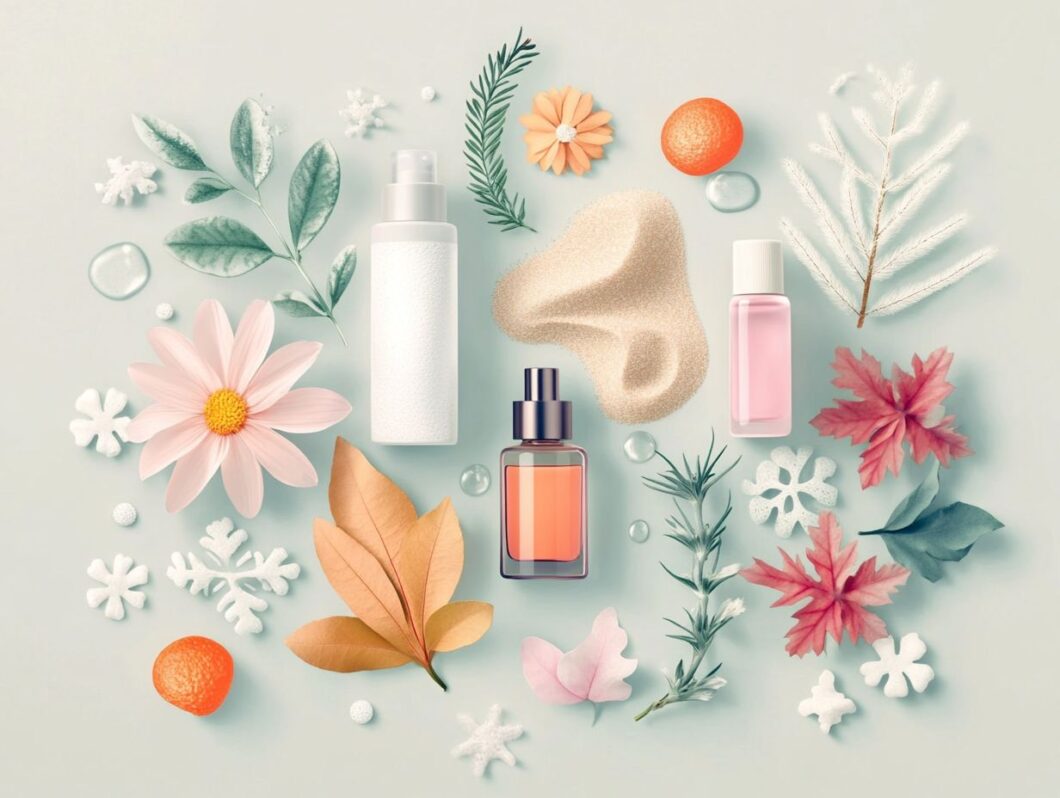My skin serves as a reflection of the environment in which I live, and understanding its unique needs across different climates is essential for maintaining healthy, radiant skin.
From the stifling humidity of summer to the biting chill of winter, each season presents its own set of challenges. This guide delves into the relationship between climate and skin health, providing tailored skincare recommendations for hot, humid, dry, and moderate conditions.
In addition, I include general tips to help keep my skincare routine effective throughout the year. By learning how to adapt my regimen, I can ensure my skin remains happy and healthy, regardless of the weather.
Key Takeaways:
Understanding Your Skin’s Needs in Different Climates
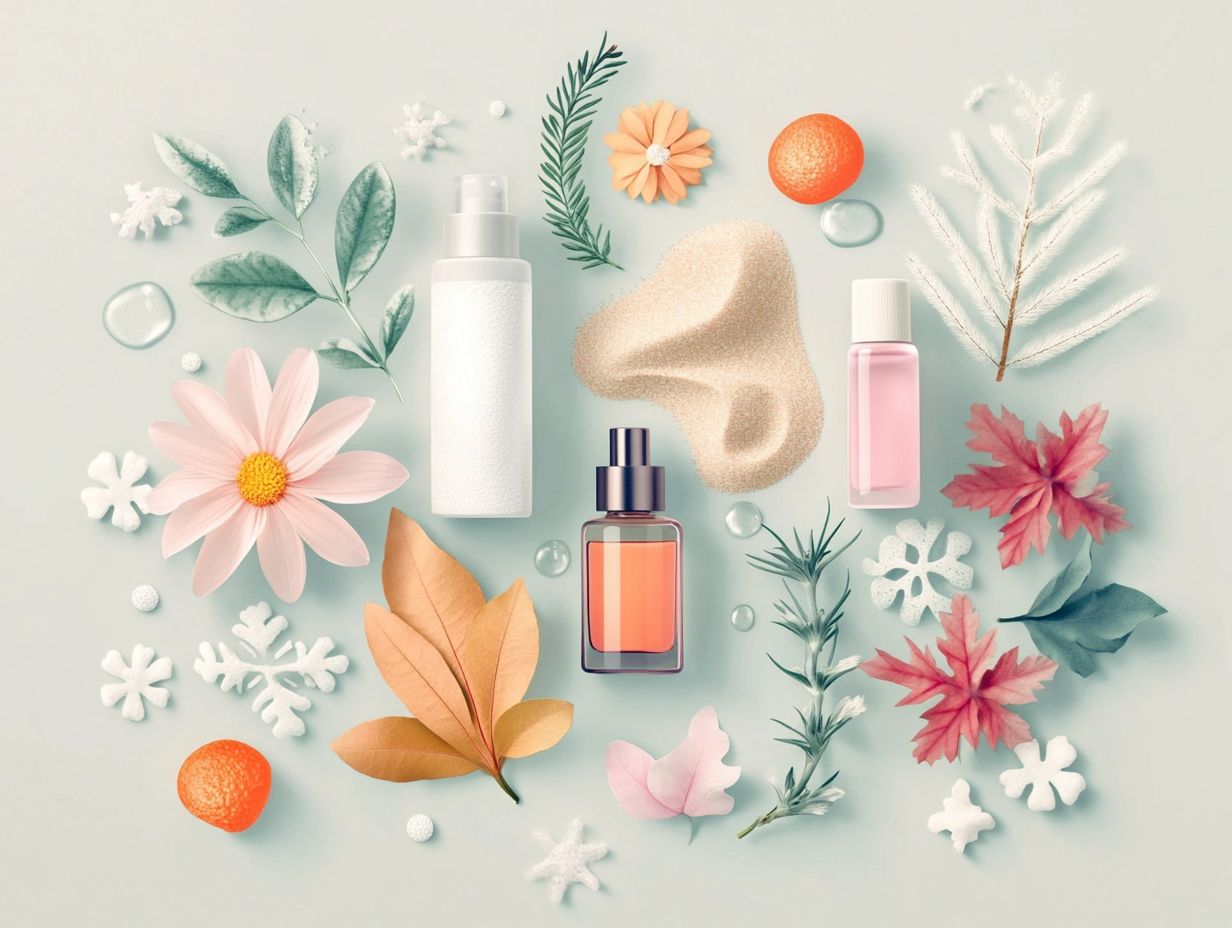
Understanding my skin’s needs in different climates is essential for maintaining optimal skin health and radiance throughout the year. Each season brings unique environmental stressors that can impact my skin’s hydration levels, texture, and overall appearance.
Whether facing the sunny days of summer, the dry winds of winter, the refreshing blooms of spring, or the crisp air of fall, it is crucial for me to tailor my skincare routine to these seasonal changes.
By recognizing how my skin reacts to various climatic factors, I can select the right products and treatments to effectively protect and nourish it.
How Climate Affects Skin Health
I recognize that climate plays a significant role in determining the health of my skin, influencing factors such as hydration, irritation, and overall skin barrier function.
For example, in humid environments, I notice that the excess moisture in the air can lead to increased oil production, which may result in potential breakouts and clogged pores. On the other hand, cold and dry climates tend to strip my skin of its natural oils, leaving it feeling tight, flaky, and irritated.
To address these diverse skin challenges, I incorporate products that are rich in antioxidants and provide intensive hydration. These solutions not only protect my skin from environmental stressors but also help restore essential moisture, allowing me to maintain a healthy, balanced complexion regardless of the climate I am in.
Skincare Swaps for Hot and Humid Climates
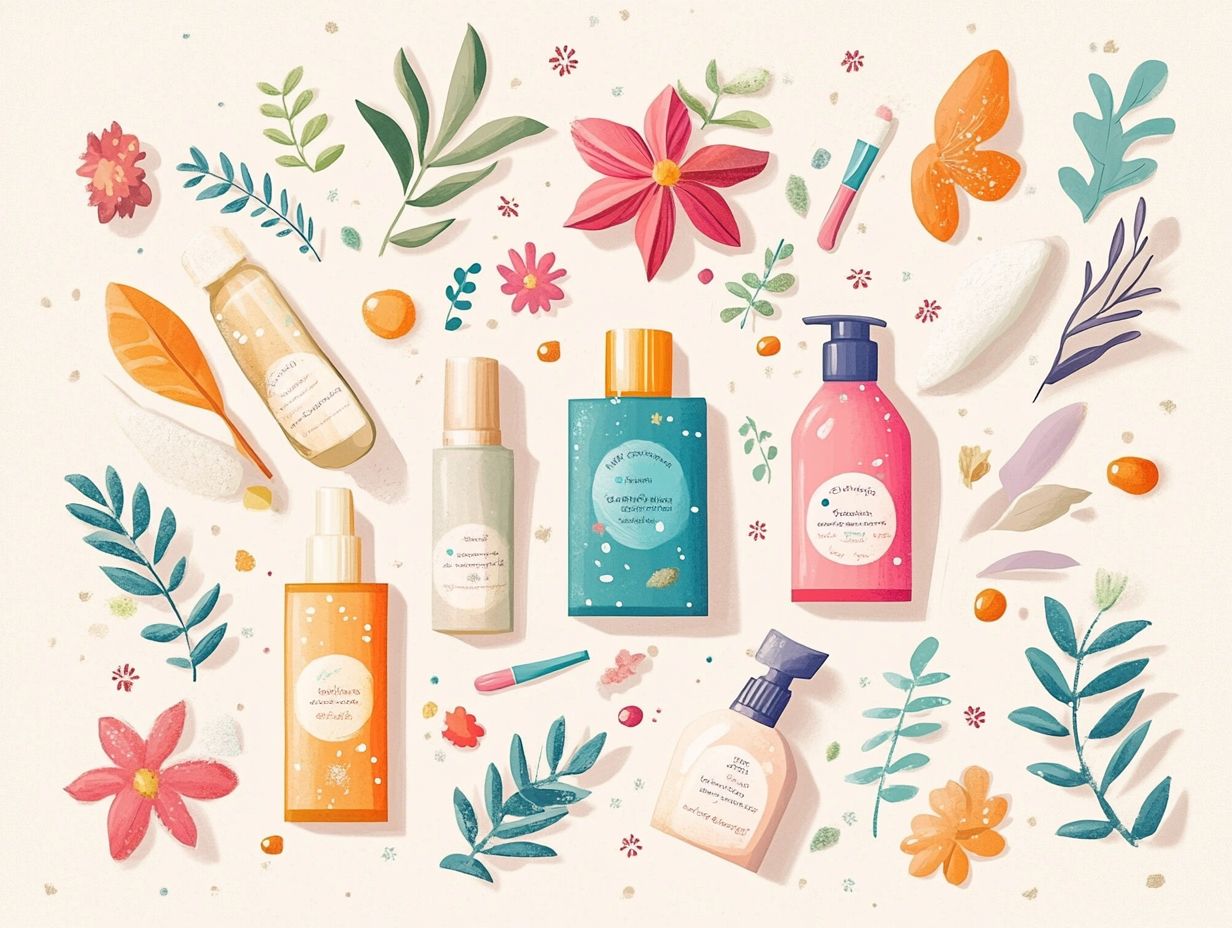
In hot and humid climates, it is essential for me to make thoughtful adjustments to my skincare routine to effectively combat excess oil while maintaining hydration without causing irritation.
The high humidity can lead to increased sweat and oil production, which requires a focus on lightweight, non-comedogenic products that cleanse effectively and provide moisture without clogging pores.
I prioritize incorporating gentle face washes, hydrating gels, and protective SPF to ensure that my skin remains balanced and healthy despite the heat.
Adapting Your Routine for High Humidity
Adapting my skincare routine for high humidity is crucial to ensure my skin remains hydrated without feeling greasy. In these conditions, I find that opting for lightweight moisturizers makes a significant difference, as they provide the necessary hydration without adding excess weight to my skin.
Incorporating hydrating serums infused with ingredients like hyaluronic acid or aloe vera also helps draw moisture into the skin, resulting in a plump and dewy appearance. I recognize the importance of not overlooking the protective benefits of SPF, as it defends against harmful UV rays and environmental stressors that can exacerbate skin issues.
By keeping these strategies in mind, I can maintain healthy and radiant skin, even in the stickiest of climates.
Skincare Swaps for Dry and Cold Climates
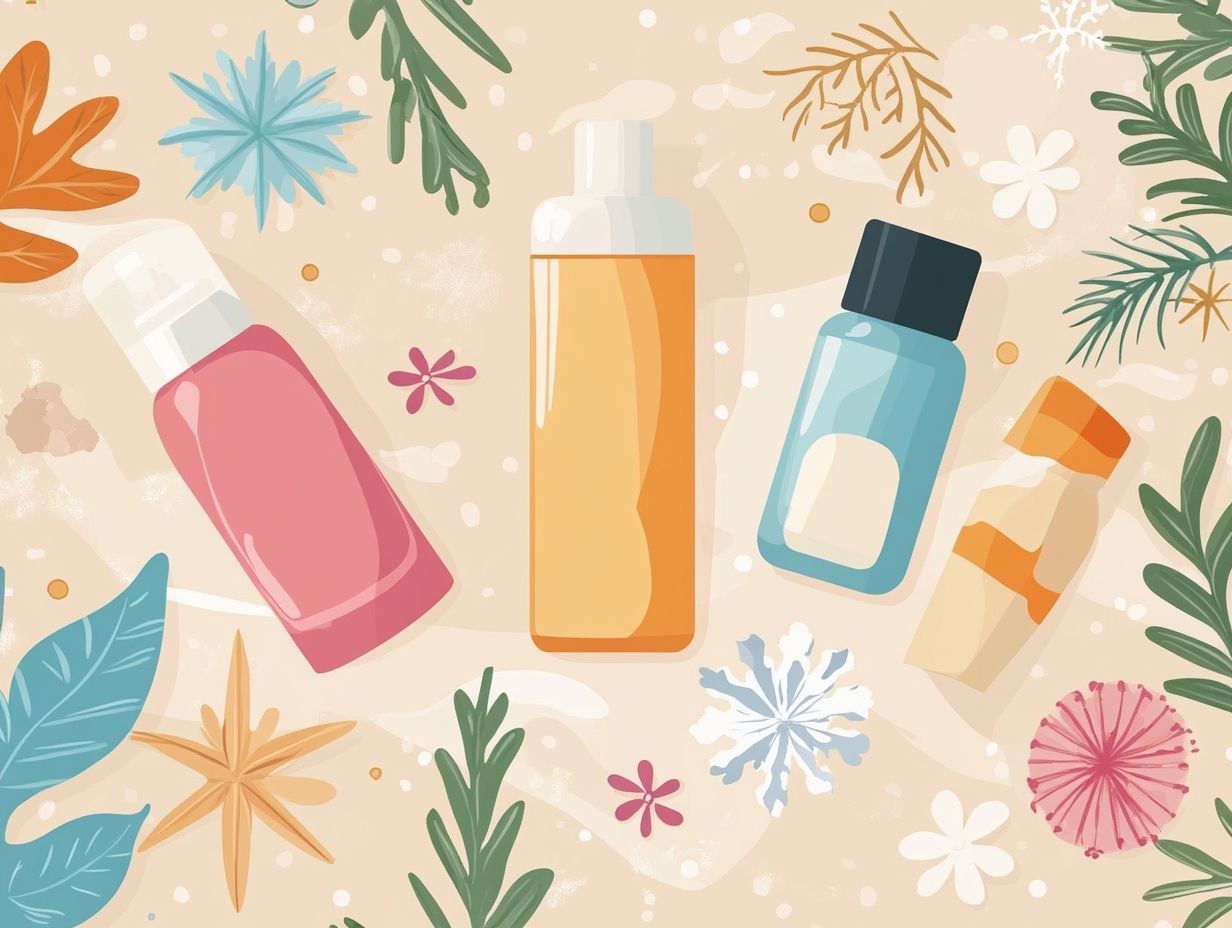
In dry and cold climates, I prioritize nourishment and moisture retention in my skincare routine to counteract the harsh effects of low humidity and frigid temperatures.
The skin barrier can easily become compromised, leading to dryness, irritation, and a dull appearance. Therefore, it is essential for me to incorporate rich, hydrating products designed to restore moisture.
I consider using nourishing oils and creams infused with healing ingredients such as chamomile and bakuchiol, along with thick moisturizers that create a protective barrier against environmental aggressors.
Protecting and Nourishing Skin in Low Humidity
Protecting and nourishing my skin in low humidity settings requires a strategic approach to hydration and barrier maintenance. This entails selecting the appropriate products and techniques that effectively counteract the drying effects of low moisture levels in the air.
To begin, I prioritize incorporating a high-quality serum that contains hyaluronic acid, as it is instrumental in drawing moisture into the skin. I complement this with a moisturizing oil, such as jojoba or argan oil, to seal in that hydration.
Additionally, I adopt techniques like humidifying my living spaces or using thermal water sprays to significantly enhance moisture retention. Regular exfoliation is also a key practice for me, as it removes dead skin cells and allows for improved absorption of hydrating products.
Skincare Swaps for Moderate and Changing Climates
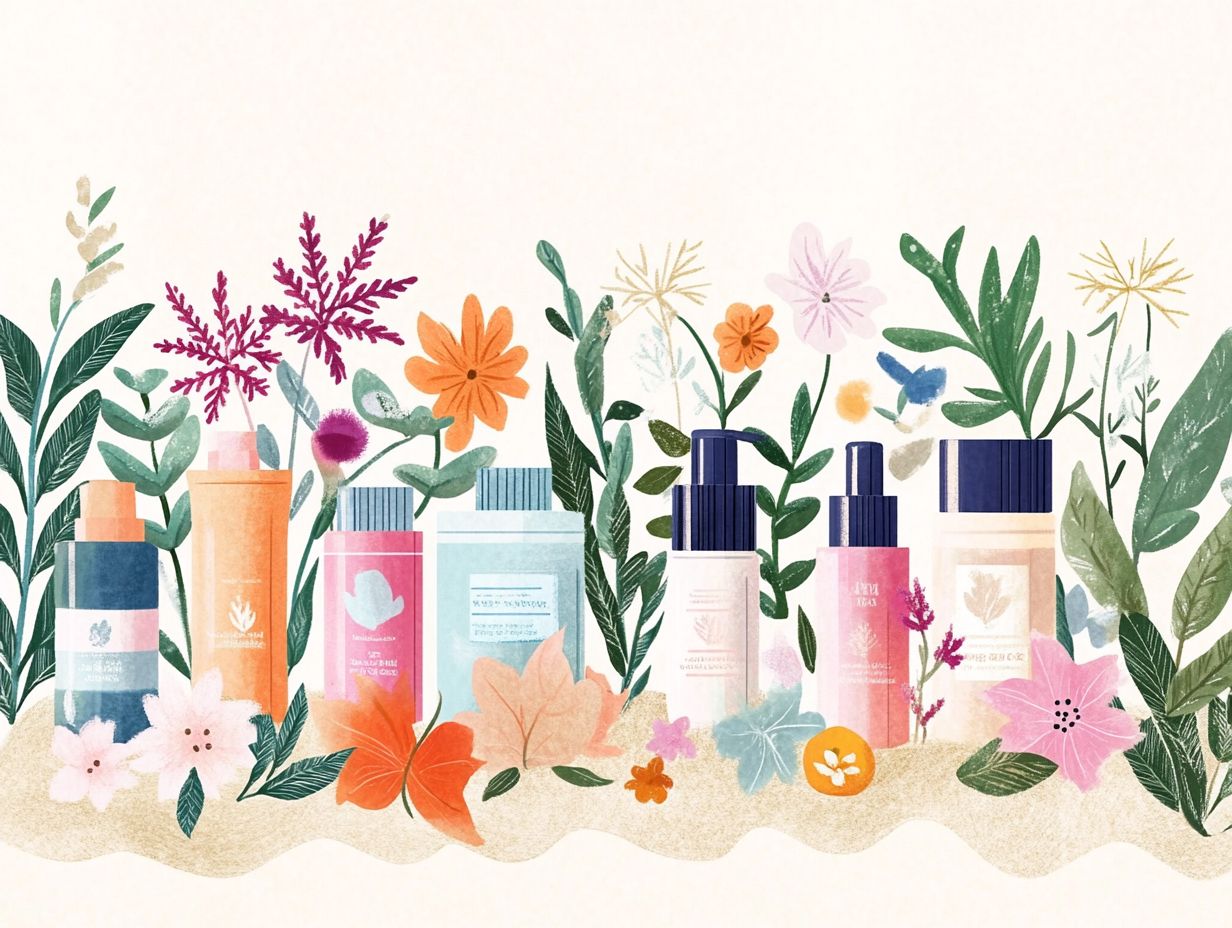
In moderate and changing climates, I understand the importance of having a skincare routine that is adaptable to fluctuating weather conditions, as these can significantly impact skin health.
This requires being equipped with a diverse range of products to address various skin needs throughout the year, including gentle exfoliants, hydrating serums, and nourishing moisturizers enriched with antioxidants to shield against environmental stressors.
By maintaining flexibility in my routine, I can ensure optimal skin health regardless of the weather conditions.
Adjusting Your Routine for Fluctuating Weather
Adjusting my skincare routine to accommodate fluctuating weather is essential for addressing the varying hydration needs of my skin.
As temperatures change, the moisture content in the air alters significantly, which can impact the effectiveness of my skincare products. For example, during the colder months, I find it necessary to incorporate heavier creams and oils to lock in moisture, whereas warmer seasons often call for lighter lotions that won’t clog my pores.
I’ve learned that layering products correctly can maximize hydration; starting with a lightweight serum and then applying a moisturizer creates an effective barrier against dryness.
It’s also important to remember that seasonal changes can influence skin sensitivity and oil production, which guides me in selecting the right formulations to ensure my skin remains balanced and healthy throughout the year.
General Tips for Seasonal Skincare
To maintain a healthy skincare routine year-round, I find it essential to implement general tips that address the unique needs of my skin in each season.
Regularly assessing my skin’s moisture levels and selecting the appropriate products for cleansing and moisturizing is crucial. Additionally, being mindful of environmental factors can greatly enhance my skin health.
By prioritizing hydration and protection from allergens and irritants, I can ensure that my skin remains balanced and radiant throughout the year.
Maintaining a Healthy Skincare Routine Year-Round
Maintaining a healthy skincare routine throughout the year is essential for keeping my skin vibrant and resilient against seasonal challenges. I find that consistent practices not only help build a protective barrier but also enable my skin to adapt more effectively to changing weather conditions.
It is crucial to have staple products that meet my skin’s needs, such as moisturizers and sunscreens, which provide all-day hydration and protection. As the seasons change, I adjust my skincare approach accordingly; for example, a lighter moisturizer works well during the humid summer months, while a richer cream is necessary during the dry winter season.
Regularly reassessing and fine-tuning my routine ensures that I provide optimal care, allowing my skin to thrive all year round.


